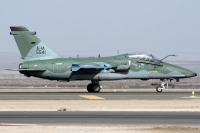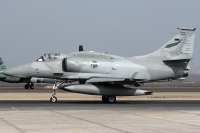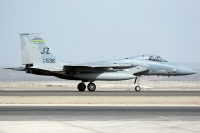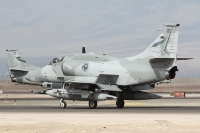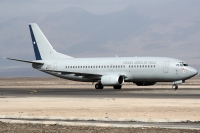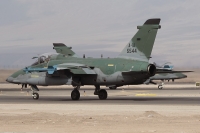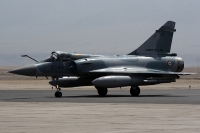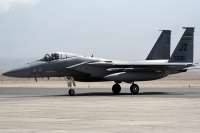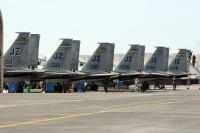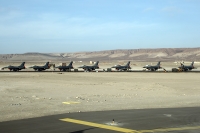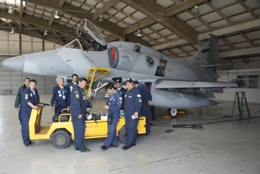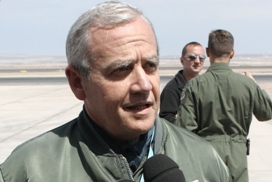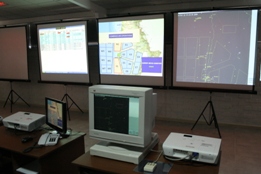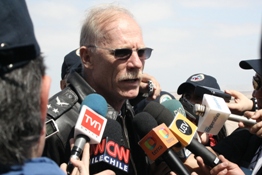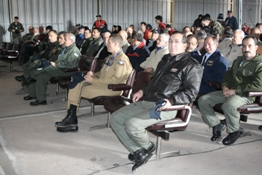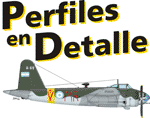|
|||||||||||||||||||||||||||||||||||||||||||||||||||||||||||||||||||||||||||||||||||||||||||||||||||||||
|
|
|||||||||||||||||||||||||||||||||||||||||||||||||||||||||||||||||||||||||||||||||||||||||||||||||||||||
|
|||||||||||||||||||||||||||||||||||||||||||||||||||||||||||||||||||||||||||||||||||||||||||||||||||||||
|
|
|||||||||||||||||||||||||||||||||||||||||||||||||||||||||||||||||||||||||||||||||||||||||||||||||||||||
Second edition of the Chilean Air Force-hosted exercise where combined air operation were planned and executed following United Nations (UN) and North Atlantic Treaty Organization (NATO) protocols for multinational intervention in conflict areas anywhere in the World. Replicating the script for the 2004 edition of the exercise, an international coalition was assembled and deployed to Northern Chile to simulate a peace-restoring campaign in the framework of a low-intensity conflict with air operations restricted to an enclosed geographical area. Formally, the exercise's purpose was to develop interoperability, cooperation and confidence among participating air forces so as to ease assembly of future peace-keeping multi-national and multi-cultural coalitions. Ultimately, though, Salitre II was a prime opportunity for participating forces to share and compare experiences at the planning, controlling, operational and tactical air combat levels. Emphasizing the multi-national character of the exercise, Salitre II brought to Chile a French delegation not present in the earlier version. Two of the participating nations (Argentina and Brazil) were veterans of the 2004 edition while the last two (Chile and the United States) were founding members from two previous, non-UN/NATO-oriented, versions of the operation (years 2000 and 2002). Four additional nations (Venezuela, Ecuador, Mexico and Bolivia) attended the exercise with non-operating observers who might lead the way to see additional participants in future editions of this war game. Even though it was formally invited, neighboring Perú decided not to attend nor participate in the exercise in the midst of a political, diplomatic and media frenzy; forcing a number of cosmetic changes to the exercise's script so as to prevent misinterpretation that Salitre II was set to simulate a Chilean-Peruvian war. Salitre II was executed under the leadership of exercise director, general Roberto Sarabia Vilches (Chile), and his multi-national co-directors: Brigadier Carlos Hugo Cavallo (Argentina), brigadier Antonio Egito Do Amaral (Brazil), brigadier general Hugo Tilly Ebensperger (Chile), colonel Xavier Beguin (France) and colonel Bryan Bearden (United States). Air operations were conducted by the Joint Forces Air Commander, Ricardo Gutiérrez Recabarren (Chile), and each national air component was led by major Gustavo Valverde (Argentina), lieutenant colonel David Almeida Alcoforado (Brazil), commander Aldo Carbone Frugone (Chile), lieutenant colonel Christophe Michel (France) and lieutenant colonel Roy Qualls (United States). Opposition forces (OPFOR) were led by colonel Arturo Silva (Chile) and his flying component was headed by group commanders Jean Pierre Desgroux Ycaza and Leonardo Romanini Gutiérrez. Foreign observers included colonels Carlos Ramos and José Puente (Venezuela), colonels Italo Sologuren and Gustavo Vargas (Bolivia), colonel Javier Alvarado (Mexico) and lieutenant colonel Wilfrido Moya (Ecuador). All in all, participating forces comprised 113 Argentine, 79 Brazilian, 420 Chilean, 140 French and 155 United States air men and women. Participating aircraft and units came from a variety of locations and origins around the World. The hosting service contributed fighter aircraft and human strength for both coalition and opposing forces. On the rebel side, they put up F-5 Tigre IIIs from Grupo de Aviación No. 7 (deployed from Antofagasta to Iquique) and F-16C/D Fighting Falcon from Grupo 3 (Iquique residents); while coalition forces were alloted F-16A/B Fighting Falcon from Grupo 8 (Antofagasta). Additional coalition combat strength was provided by V Brigada Aérea A/TA-4AR Fighting Hawks (Villa Reynolds, Argentina), 10o. Grupo de Aviação AMX/AMX-Ts (Santa María, Brazil), Escadron de Chasse 1/12 Mirage 2000Cs (Cambrai-Épinoy, France) and 122th Fighter Squadron F-15C/D Eagles (New Orleans, Louisiana, USA). Tanker support in turn was provided by Boeing 707 conversions from Grupo 10 (Santiago, Chile) and 2° Grupo de Transporte (Rio de Janeiro, Brazil); KC-135s from Groupe de Ravitaillement de Vol 93 (Istres - Le Tubé, France) and 197th Air Refuelling Squadron (Phoenix Sky Harbor, Arizona, USA) plus a lone I Brigada Aérea KC-130H Hercules (El Palomar, Argentina). Command and control functions were performed by a Grupo 10 Boeing 707 and an Escadron de Détection et de Contrôle Aéroporté 36 E-3F Sentry (Avord, France). A number of local or foreign logistic support and rescue units were also involved in the exercise and are listed in the table below. The exercise swapped bases with the previous edition. This time, Antofagasta was designated as the primary base for participating fighter aircraft while Iquique became the supporting base for tankers, logistics and surveillance aircraft; as well as the "home" for OPFOR. The schedule comprised a two-day deployment phase (17-18 October), a four-day force integration phase (19-22) and a six-day live exercise (23-29, skipping the week end). A hot wash-up took place on Friday 30 and most aircraft withdrew on Saturday 31. Miscelaneous activities where scheduled for Wednesday 21 (Press Day), Saturday 24 (Community Day/Open House), Monday 26 (Parliament and officer academies visitors) and Tuesday 27 and Wednesday 28 (special guests including Chilean Minister of Defense, Francisco Vidal Salinas, Chilean Air Force Commander in Chief, general Ricardo Ortega Perrier, Argentine Air Force Chief of Staff, general brigadier Normando Costantino, Brazilian Air Force commander, lieutenant brigadier Juniti Saito, Commander 12th (US) Air Force, lieutenant general Glenn Spears, Chilean Navy Chief of Naval Operations, rear admiral Francisco Guzmán Vial, a host of other Chilean Air Force top brass, air, ground and sea cadets, etc.). The conflict scenario purportedly took place in an island shared by two extremely poor nations, Calisto and Io, where an insurgent leader has gained access to power and commits crimes and acts of terrorism demanding an United Nations intervention. Coalition forces were assembled with Argentine, Brazilian, Chilean, French and US air forces deploying to Antofagasta. Opposing air forces were played by Chilean Air Force fighters operating out of Iquique. The complete spectrum of flying operations comprised air-to-air engagements in beyond-visual-range conditions as well as nav/strike, combat air patrol, air interdiction and combat search and rescue missions. Flying operations were arranged in two shifts (one in the morning and one if the afternoon). The live exercise morning shift was used to perform combined air operations involving aircraft from all participating air forces following strategic objectives and goals set by the exercise director. Afternoon flights, in turn, involved tactical air-to-air and air-to-ground combined operations to further increase flying crews training. Coalition forces employed a collection of colorful call signs during the exercise: Home-owners from FACH's Grupo 8 were "Jaguars", Lousiana flyers were "Jazzes" and their special operations colleague from Georgia was "King", Brazilian AMXs were "Centauros", Argentine Fighting Hawks were "Halcones" while the French Mirages flew as "Airmaxx". Noteworthy Argentine Air Force activities and interventions included the appointment of commodore Gerardo Isaac, one of two surviving veterans to the highly controversial attack on aircraft carrier HMS "Invincible" (30 June 1982), as chief of staff to the Joint Forces Air Chief for the duration of the exercise. On the air operations side, Friday 23 saw captain Franco Paglione, a KC-130H pilot from I Br Aé, flying with the Louisiana Air National Guard WC-130H crew in a recce, tactical low-level flight and paratroop dropping mission in the exercise area; while Tuesday 27 saw captain Agustín Gato, an A-4AR pilot from V Br Aé, leading the coalition fighter formations into combat with OPFOR fighters. In the public relations arena, A-4AR C-907, KC-130H TC-70 and other members of the Argentine delegation were part of the static display in the "community day" held in Antofagasta on Saturday 24. Air Force Chief of Staff, brigadier Constantino, Air Operations Commander, brigadier Juan A. Macaya, and officer-commanding Grupo 5 de Caza, commodore Andrés Bellocq, were also noted attending the exercise on special occasions. |
|||||||||||||||||||||||||||||||||||||||||||||||||||||||||||||||||||||||||||||||||||||||||||||||||||||||
|
|
|||||||||||||||||||||||||||||||||||||||||||||||||||||||||||||||||||||||||||||||||||||||||||||||||||||||
|
|
|||||||||||||||||||||||||||||||||||||||||||||||||||||||||||||||||||||||||||||||||||||||||||||||||||||||
|
Participating units and aircraft |
|||||||||||||||||||||||||||||||||||||||||||||||||||||||||||||||||||||||||||||||||||||||||||||||||||||||
|
|||||||||||||||||||||||||||||||||||||||||||||||||||||||||||||||||||||||||||||||||||||||||||||||||||||||
|
|
|||||||||||||||||||||||||||||||||||||||||||||||||||||||||||||||||||||||||||||||||||||||||||||||||||||||
| Updated by Carlos Ay on 17 February 2010 with the cooperation of Ricardo Viti. All photos by author unless otherwise stated. | |||||||||||||||||||||||||||||||||||||||||||||||||||||||||||||||||||||||||||||||||||||||||||||||||||||||
|
|
|||||||||||||||||||||||||||||||||||||||||||||||||||||||||||||||||||||||||||||||||||||||||||||||||||||||
|
|
|||||||||||||||||||||||||||||||||||||||||||||||||||||||||||||||||||||||||||||||||||||||||||||||||||||||
|
|
|||||||||||||||||||||||||||||||||||||||||||||||||||||||||||||||||||||||||||||||||||||||||||||||||||||||
|
Aircraft histories index - Dictionary
- Bibliography & references
- Slide shows
- About Aeromilitaria Argentina |
|||||||||||||||||||||||||||||||||||||||||||||||||||||||||||||||||||||||||||||||||||||||||||||||||||||||
|
|



